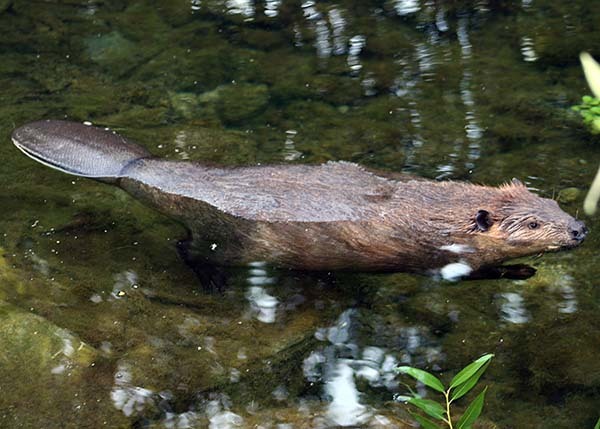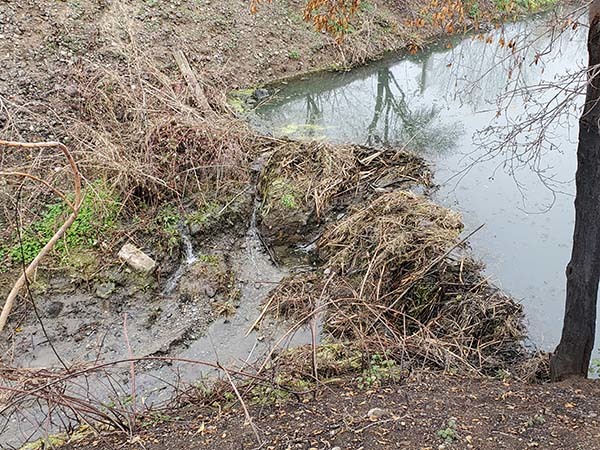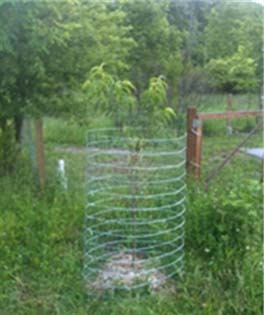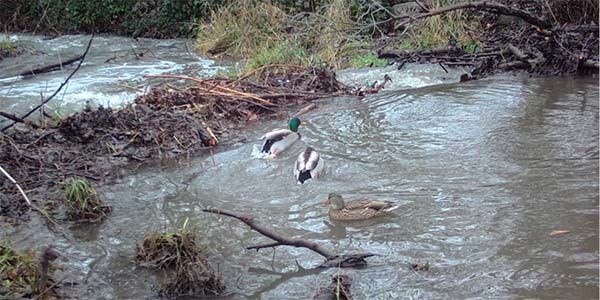|
February 2022
What’s gnawing you?
Is it the doldrums of winter? Or apparent lack thereof? A quick look outside, and you’d think that spring is just around the corner.
However, Punxsutawney Phil, the famous groundhog known for his weather predicting skills predicts another six weeks of winter.
According to the National Weather Service, we are still experiencing La Niña conditions in the Eastern Pacific Ocean. This is currently expected through spring, and then may trend to neutral.
In general, La Niña conditions amplify the effects of the polar jetstream. This causes more “extreme” weather conditions, often resulting in record warm/cold and/or record dry/wet years.
La Niña can bring very productive ocean conditions for our hungry salmon and steelhead that are at sea. Cold sea surface temperatures contribute to abundant food webs. The marine heat wave and El Niño conditions (warmer than average sea surface temperatures) plagued our ocean-bound young fish since 2014. However, that ended in 2020 in our area with a weak La Niña and cooler conditions.
Back on land, La Niña in Southern Oregon can bring major cold outbreaks and most often brings above average mountain snowpack although that’s not always guaranteed.
The area is situated in a bit of a limbo region.
We may have higher than average precipitation and cool temperatures, or we may have below average precipitation and warmer temperatures. It’s been a weird winter to say the least, starting off with excellent precipitation and mountain snowpack followed by an unusually dry and warm January.
There is still time for the weather to change.
Winter came late (March and April) in 2012. In 1967, 10-15 feet of snow fell in the Cascades and Siskiyou’s in March and April. Both of these examples were strong La Niña years. For February 2022, we have equal chances of being below, above, or just plain average for precipitation.
Unfortunately, our reservoirs are extremely low except for Applegate Reservoir. The Rogue is still considered to be in a drought. These are the gnawing concerns in the minds of the Rogue District fish biologists. We’re hoping Punxsutawney Phil really did see his shadow!
 Source: https://www.cpc.ncep.noaa.gov/
Rogue beavers: nature’s dam builders
Another oversized rodent and a resident of the Rogue watershed is the American beaver. These busy critters rely on that gnawing feeling, but for a different – and good – reason.
 Photo by Kathy Munsel
Beavers are often referred to as a keystone species, one that can alter its habitat and one that generally benefits other species.
Beavers help add structure to creeks. Structures often back up water, creating deep pools for juvenile fish like coho and steelhead. Pools can also help recharge ground water.
 Beaver dam on Upper Bear Creek
Although beavers do create dams, these are different than a walled off impoundment to fish migration. With cracks and crevices fish can migrate through, beaver dams don’t necessarily block fish passage.
ODFW’s new Rogue South Coast Multispecies Plan includes a habitat strategy to promote beavers to increase water quantity and stream complexity, primarily through riparian restoration and helping landowners learn to live with beaver impacts. We encourage everyone to read the new plan on the ODFW website.
The innate urge to gnaw streamside vegetation can often get busy beavers in trouble, especially when a prized tree succumbs to the sharp incisors of one of these enterprising critters on private property.
ODFW’s Salmon Trout Enhancement Program (STEP) has solutions to help landowners live with beavers and strongly encourages non-lethal methods. STEP can purchase woven wire fencing for trees to help landowners live with beavers. Other tools are available.
 Woven wire fencing for young trees. Image Source: Wisconsin Dept. of Natural Resources, “Living with beaver handbook.”
Beavers are widely distributed in the Rogue watershed.
You can see their handiwork in the urban streams of Bear Creek. Ashland’s North Mountain Park often has a beaver working away in upper Bear Creek. Dams are present near Talent and northern Ashland where beavers are gorging themselves on newly sprouting black cottonwood and willows in the Almeda Fire footprint. A beaver dam is present on a spring-fed stream at the Phoenix Civic Center. A few years ago, business park residents on Larson Creek near Saint Mary’s School in Medford had a busy beaver working alongside office buildings.
You too can encourage beaver to take residence if you live near a creek by protecting and planting willows, cottonwood, and alder and a diversity of other native riparian shrubs. Contact ODFW at 541-857-2411 to learn more and ask for the STEP program biologist.
 Photo by Jerry Burke. Mallard ducks (and other wildlife) like beaver ponds too!
|